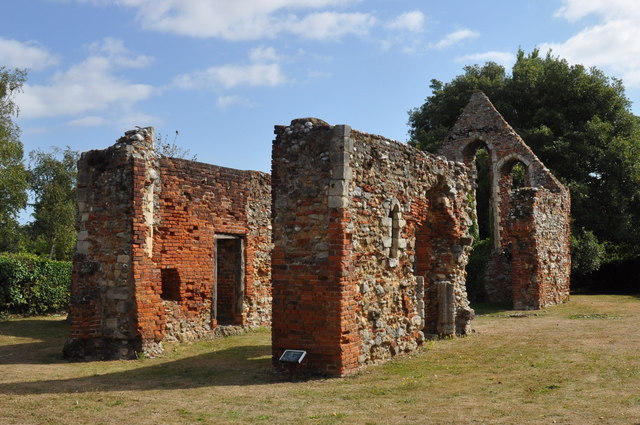The Leper Hospital Of St Giles on:
[Wikipedia]
[Google]
[Amazon]
 The Leper Hospital of St Giles is a ruined medieval hospital located in the town of
The Leper Hospital of St Giles is a ruined medieval hospital located in the town of
 The Leper Hospital of St Giles is a ruined medieval hospital located in the town of
The Leper Hospital of St Giles is a ruined medieval hospital located in the town of Maldon
Maldon (, locally ) is a town and civil parish on the Blackwater Estuary in Essex, England. It is the seat of the Maldon District and starting point of the Chelmer and Blackwater Navigation. It is known for Maldon Sea Salt which is prod ...
in Essex
Essex ( ) is a Ceremonial counties of England, ceremonial county in the East of England, and one of the home counties. It is bordered by Cambridgeshire and Suffolk to the north, the North Sea to the east, Kent across the Thames Estuary to the ...
, England
England is a Countries of the United Kingdom, country that is part of the United Kingdom. It is located on the island of Great Britain, of which it covers about 62%, and List of islands of England, more than 100 smaller adjacent islands. It ...
. Originally established to treat and shelter the town's lepers, it is one of very few surviving medieval hospitals in England. After the dissolution, the building was later used as a barn. The site was designated a scheduled monument
In the United Kingdom, a scheduled monument is a nationally important archaeological site or historic building, given protection against unauthorised change.
The various pieces of legislation that legally protect heritage assets from damage, visu ...
in 1923.
Description
The ruined medieval building is one of few surviving medieval hospitals in England. The surviving structure, located on Spital Road in the town of Maldon in Essex, is believed to be the hospital's chapel. Most of the chapel's above-ground remains date to the end of the 12th century and include the north chancel wall, east and west walls of the north transept and the east, west and south walls of the south transept. The building previously included a western annexe where the living spaces or hall were located. The chapel's remains are a mix offlint
Flint, occasionally flintstone, is a sedimentary cryptocrystalline form of the mineral quartz, categorized as the variety of chert that occurs in chalk or marly limestone. Historically, flint was widely used to make stone tools and start ...
rubble
Rubble is broken stone, of irregular size, shape and texture; undressed especially as a filling-in. Rubble naturally found in the soil is known also as 'brash' (compare cornbrash)."Rubble" def. 2., "Brash n. 2. def. 1. ''Oxford English Dictionar ...
and Roman
Roman or Romans most often refers to:
*Rome, the capital city of Italy
*Ancient Rome, Roman civilization from 8th century BC to 5th century AD
*Roman people, the people of Roman civilization
*Epistle to the Romans, shortened to Romans, a letter w ...
brickwork, and survive to a height of the building's original eaves. Repairs were made to the chapel in the 16th century with red brick and limestone
Limestone is a type of carbonate rock, carbonate sedimentary rock which is the main source of the material Lime (material), lime. It is composed mostly of the minerals calcite and aragonite, which are different Polymorphism (materials science) ...
ashlar
Ashlar () is a cut and dressed rock (geology), stone, worked using a chisel to achieve a specific form, typically rectangular in shape. The term can also refer to a structure built from such stones.
Ashlar is the finest stone masonry unit, a ...
dressings.
History
Medieval hospitals were originally established in England by Anglo-Norman bishops and queens during the 11th century. The hospitals dispensed both spiritual and medical care to the aged, poor and infirm. By the mid 16th century there were approximately 800 hospitals throughout England. St Giles' Hospital was originally built as a hospital chapel in the late 12th century. Records from 1402 state that the Hospital of St Giles was founded by one of the Kings of England. Its initial objective was to house and provide for the maintenance of a chaplain to celebrate daily mass, and to provide a sanctuary for the town's lepers. The chapel was established as a dependence of the Augustinian Bicknacre Priory. After the number of people afflicted with leprosy declined during the 13th and 14th centuries, St Giles' was converted to a hospital for the poor, aged and infirm. In 1401, the hospital became a free chapel, no longer under the jurisdiction of the parish priest. In 1481, the management of the hospital was transferred toBeeleigh Abbey
Beeleigh Abbey near Maldon in Essex, England, was a monastery constructed in 1180 for the Premonstratensians, as known as the Norbertines or Premonstratensians. The order linked the change of the separate life of monks in the 12th century with ...
in Maldon. The hospital closed after 1538, after the dissolution of the abbey. By 1763, the hospital was being used as a barn. Records show that in 1899, the barn was in ruins. The site was designated a scheduled monument
In the United Kingdom, a scheduled monument is a nationally important archaeological site or historic building, given protection against unauthorised change.
The various pieces of legislation that legally protect heritage assets from damage, visu ...
in 1923.
See also
*Scheduled monuments in Essex
There are 425 scheduled monuments in the county of Essex, England. These scheduled monument, protected sites date from the Neolithic period in some cases and include Tumulus, barrows, moated sites, ruined abbeys, castles, and a windmill.
In the U ...
* Hospital of St John the Baptist, High Wycombe
References
{{coord, 51.726898, 0.667409, display=title, type:landmark_region:GB Scheduled monuments in Essex Ruins in Essex